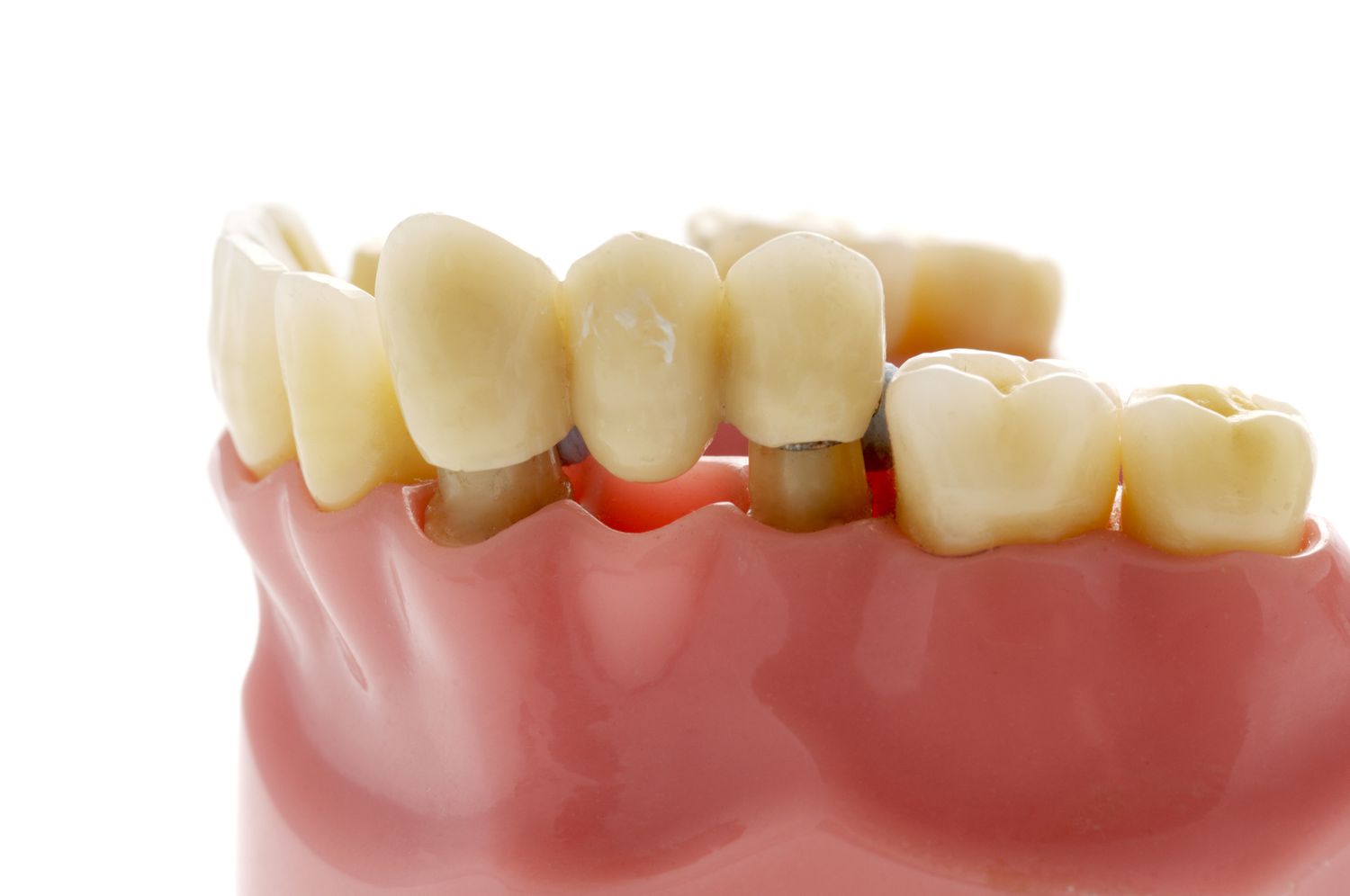Not only are missing teeth ugly, but they can also lead to future dental and periodontal issues. A dental bridge is a treatment option that is successful in replacing a lost tooth or several missing teeth, restoring both the aesthetics and functionality of your teeth. A dental bridge is made to replace missing teeth in your smile with an identically natural-looking replacement.
Does the gap leave by a lost tooth make you feel self-conscious when you smile? You may be considering a dental bridge, but you should carefully consider the pros and cons of a dental bridge.
A dental bridge is made up of many dental crowns that have been joined. The tooth replacement, also known as the pontic, is placed inside the gap left by your lost tooth. On either side of the gap, your natural teeth are attached to the other crowns, which serve as anchors. A bridge is permanently anchored to your existing teeth, as opposed to partial dentures, which fit over your gums and are designed to be taken out. A bridge requires the same maintenance as your actual teeth and is not taken out for cleaning. A bridge is distinct from dental implants. A crown supported by a titanium device inserted into the jaw bone makes up implants, which are also permanent but are not attached to nearby teeth.
Pros of Dental Bridges
Because people can perceive the advantages of a dental bridge, they are more frequently chosen than implants or partial dentures.
Achieve a Beautiful and Natural-Looking Smile
Typically made of porcelain, dental bridges can be sculpted and colored to mirror real teeth closely. You won’t even be able to recognize the distinction between your new pearly whites and your natural teeth since your dentist will match the color and shape of your new teeth to the rest of your smile.
Bridges improve the appearance of neighboring teeth in addition to replacing lost ones. Your neighboring teeth on either side of your missing tooth or teeth will be filed down and given crowns, which can improve their health and appearance.
Tooth Bridges Are Easy to Place
You probably want to start seeing the benefits of repairing your smile as soon as possible. You’ll be relieved to learn that placing dental bridges is a relatively quick and simple procedure.
Most people only need to visit the dentist twice. Your dentist will take impressions of your teeth at the initial visit and file the nearby teeth to prepare them for crowns. Your dentist will then fit the bridge during your second visit.
You might require additional visits to the dentist before your bridge is installed if you have any other dental problems or if the bridge is secured to a dental implant. To check on your bridge, your dentist might also arrange a follow-up consultation.
Read more: Several Factors Affecting the Cost of Dental bridges
Dental Bridges Are a Comfortable Solution
Bridges feel much like your original teeth and have a gorgeously natural appearance. You don’t need to be ashamed to chew, speak, or consume regularly. As soon as the anesthetic from the treatment wears off, your dental bridge should feel comfortable, so you won’t have to spend much time getting used to it. Similar to full dentures, partial dentures are temporarily sealed to the gums. This could be unpleasant and messy. The seal is not as secure as solutions that are permanently attached, including bridges and implants.
Dental Bridges Can Prevent Bone Loss
The force of biting and chewing no longer stimulates the bone beneath a missing tooth. Without this stimulation, your jawbone may begin to deteriorate, which could eventually result in bone loss.
However, your jawbone won’t deteriorate or lose density if you replace your missing tooth or teeth with a dental bridge. It will continue to be as sturdy as if your natural teeth were still present. For certain people, a bridge might be a better alternative because it is attached to the patient’s natural teeth rather than the underlying bone.

Prevent Your Teeth from Moving out of Alignment
A misalignment, which occurs when your teeth begin to slide into the space left by missing teeth, is another typical side effect of tooth loss. Your teeth won’t drift out of alignment if you use a dental bridge to close that gap.
Bridges Are Easy to Maintain
Since dental bridges are fixed in place, you don’t need to remove them to brush your teeth. Instead, you simply brush your teeth as usual, including the bridge. Your bridge should be simple to maintain as long as you maintain a decent oral hygiene practice and attend your dentist’s for check-ups and hygienist sessions regularly.
Dental Bridges Can Last Many Years
A bridge can serve as a long-term replacement for lost teeth if you maintain proper dental hygiene and take care of it. Most dental bridges last between five and fifteen years, but by taking proper care of your replacement teeth, you can extend their life.
Cons of Dental Bridges
In addition to the advantages, the disadvantages of dental bridges are very obvious.
Tooth Bridges Aren’t Permanent
Dental bridges can last for over ten years; however, they are not indestructible. To maintain the health of your smile, you’ll need to replace your bridge every five to fifteen years. By replacing your bridge, you can stop wear and strain from harming the teeth that support your crowns.
Healthy Teeth Will Need to Be Filed
Healthy teeth are necessary for the placement of bridges. Because crowns must be fitted to such teeth, the treatment could also harm those teeth. Your dentist must file down the teeth on each side of the gapped teeth to place the crowns before attaching a dental bridge. You’ll always need to have a crown glued to your teeth after they’ve been filed. While dentures are fastened to the gums with a temporary adhesive, implants are fixed to the jaw and do not harm the remaining teeth.
There Is a Slight Risk of Nerve Damage
Nerve injury is a fairly uncommon complication that comes with dental bridges. The operation has the potential to harm the gum-line nerves, necessitating further root canal therapy. However, only a small minority of persons who use dental bridges end up with nerve injury.
Flossing a Dental Bridge Can Be Difficult
Keeping dental bridges clean is usually simple, although flossing might be a little challenging. Plaque can accumulate between the underside of the bridge and your gums since dental bridges aren’t rooted in your gums like dental implants are. To keep the bridge’s bottom clean, you might need to utilize specialized methods and supplies.
Dentist For Life Dental Can Help You Choose Your Best Option
If you’re ready to enhance your smile and replace missing teeth, don’t hesitate to reach out to Dentist For Life in Marysville, Ohio. Our friendly dentists will discuss your options and assist you in getting started.



